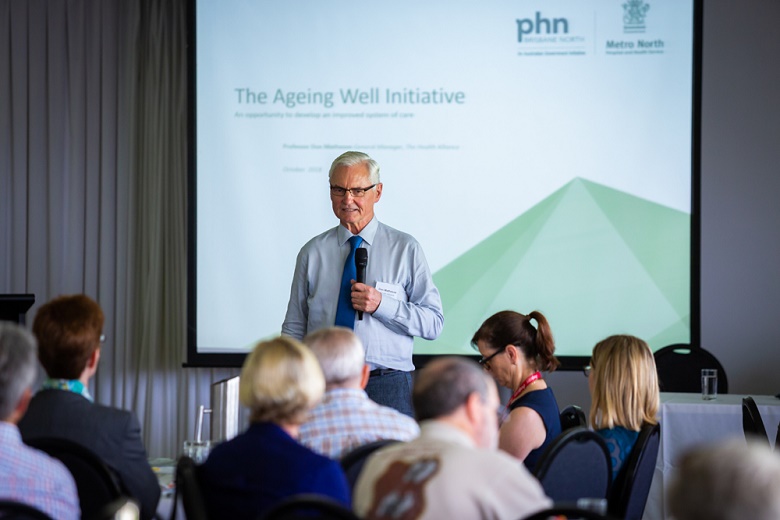
Less than half of Australia’s primary health networks are collaborating with local government to improve health outcomes, study shows.
Councils are the level of government perhaps best placed to inform public health outcomes yet the Commonwealth’s Primary Health Networks are spending limited time collaborating with local government, new research shows.
The PHNs, previously known as Medicare Locals, are the national network of 31 regional clusters that bring together GPs and other healthcare providers to provide more coordinated healthcare.
The researchers surveyed the organisations in 2014 and in 2016 and found about only 40 per cent were engaging with local government, according to the findings published in the Australian and New Zealand Journal of Public Health.
Those that were collaborating with councils said the partnerships were limited to the sharing of data and consultation rather than joint planning, says paper co-author Dr Sara Javanparast, a senior research fellow at Southgate Institute for Health, Society and Equity at Flinders University.
A ‘lost opportunity’
This lack of collaboration is a “lost opportunity” for Australian healthcare provision, the researchers argue.
Partnerships between PHNs and local government should be mandated nationwide as they have huge potential to improve service delivery and advance overall population health outcomes, they said.

Dr Toby Freeman, deputy director of the Southgate Institute and a co-author of the study, said that as the level of government closest to the community, local government is in a prime position to impact public health outcomes.
“A lot of the local government domain is around the nature of the community environment. These spaces all interact to affect health outcomes so if we can collaborate with leaders we’d end up with much healthier communities,” Dr Freeman told Government News.
With access to complex information about communities and the power to provide public services that shape health outcomes, councils are one of the best equipped sectors to advance public health planning, the paper argues.
“Given the complexity and breadth of social factors affecting health, the involvement of sectors outside health is essential for effective planning for population health,” it says.
Social determinants have a decisive impact on health outcomes and need to be integrated with public health planning, Dr Javanaparast says.
“Collaboration with local government helps PHNs act more on social determinants and to link more with the social sectors,” she argues.
These partnerships could also allow PHNs and councils to split funding for projects, while also helping to better prioritise and appraise health responses, she says.
Barriers and aids to collaboration
Legislative inconsistency between states and territories, fiscal constraints and variations in leadership and governance are all impeding collaboration between councils and PHNs.

A variation in the legislation mandating collaboration between councils and PHNs, and in PHN’s policies, is impeding collaboration, Dr Javanparast said.
“In states like Victoria and South Australia, where there is legislation in which local governments are mandated to collaborate on population health planning, we strongly found it is policy and legislative innovation helping [councils] to get together with primary health networks.”
Mandating this collaboration for all states and territories would improve health outcomes, the paper says.
“Greater recognition and promotion of the role of local governments in health planning in both public health policies and national and jurisdictional legislation will open a window of opportunities for more effective and efficient population health planning,” it argues.
Despite these constraints, some health networks were able to include councils in population planning through organisational leadership and governance or alliances, according to the research.
Dr Freeman says this kind of leadership is essential to promote partnerships that enhance health outcomes.
The allocation of dedicated resources to promote collaboration between PHNs and local governments is also critical, the paper says.
Collaboration improves aged care

Through a focus on targeted population health, Brisbane North Primary Health Network has had success collaborating with various sectors, including local government.
The PHN’s health alliance looks at particular populations where there are challenges in healthcare provision and aims to respond by engaging relevant stakeholders and addressing some of the key issues.
Don Matheson, general manager of the PHN’s health alliance, told Government News that the alliance “creates a neutral space in the sector where all parts can come together to discuss challenges.”
He says a number of older residents voiced concerns about the impact of a lack of public services on their wellbeing – prompting the group to partner with local government.
Seniors raised issues including transport, social connection and access to amenities, “which is as much to do with urban design as it is to do with healthcare,” he said.
The partnership with the council is “essential” for public health outcomes given the closeness of local government to community needs, Professor Matheson said.
Comment below to have your say on this story.
If you have a news story or tip-off, get in touch at editorial@governmentnews.com.au.
Sign up to the Government News newsletter.
Most read
Scathing report finds little has changed at PwC
Qld council welcomes progress on massive battery system
Inquiry to consider how federal govt can address councils’ sustainability issues
‘Local’ procurement turns out not to be so local, committee hears
Another report finds local government falling down on cyber security



